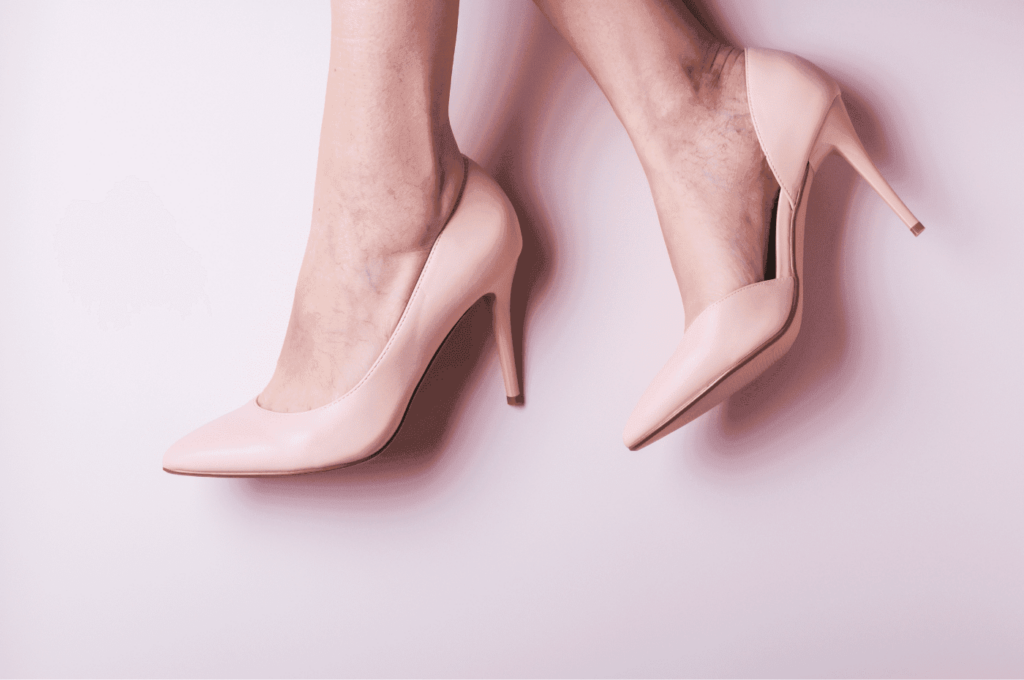
| Understanding the myths and facts surrounding spider veins is crucial for accurate information and proper management. While spider veins are primarily a cosmetic concern, it is important to be aware of any associated symptoms and consider seeking medical advice if necessary. Remember, early intervention and appropriate treatment can help manage spider veins effectively. Consult with a healthcare professional or a qualified vein specialist at AVLC in York & Lancaster to discuss treatment options tailored to your specific situation. |
Spider veins are a common vascular condition that affects a significant number of individuals, causing unsightly appearances and potential discomfort. These small, dilated blood vessels near the surface of the skin can appear as intricate web-like patterns, often in shades of red, blue, or purple. While spider veins are prevalent, there is often confusion and misinformation surrounding this condition.
In this blog post, we will debunk some of these myths and provide accurate information to help you better understand spider veins. By gaining a deeper understanding of spider veins, you will be better equipped to make informed decisions regarding your own health and well-being.
Myth #1: Spider veins only occur on the legs.
Fact: While spider veins are commonly found on the legs, they can also appear on other areas of the body, including the face, chest, and arms. The legs are more prone to spider veins due to the increased pressure on the veins when standing or walking.
Myth #2: Spider veins are only a cosmetic issue.
Fact: While spider veins are primarily a cosmetic concern, they can be indicative of an underlying venous insufficiency or circulation problem. In some cases, spider veins may be associated with symptoms like leg discomfort, swelling, or aching. Consulting a healthcare professional is important to rule out any underlying conditions and determine the appropriate treatment.
Myth #3: Spider veins will disappear on their own.
Fact: Spider veins do not typically resolve on their own. Once they develop, they usually persist unless treated. However, the progression of spider veins can be managed, and their appearance can be improved through various vein treatment options for spider veins.
Myth #4: Exercise worsens spider veins.
Fact: Regular exercise, particularly activities that promote leg movement and muscle strength, can actually help improve circulation and alleviate the symptoms associated with spider veins. Exercise helps pump blood back to the heart, reducing the pooling of blood in the leg veins. However, individuals with existing vein conditions should consult with a healthcare professional before starting or modifying an exercise routine.
Myth #5: Spider veins and varicose veins are the same thing.
Fact: Spider veins and varicose veins share some similarities, but they are not the same condition. Spider veins are smaller, closer to the surface of the skin, and appear as thin, web-like lines. Varicose veins are larger, bulging veins that may cause discomfort and are often associated with symptoms like pain, heaviness, or swelling. Varicose veins are typically a result of venous insufficiency, whereas spider veins can develop due to various factors.
Myth #6: Only women get spider veins.
Fact: While spider veins are more common in women, men can also develop them. Hormonal changes, genetics, and lifestyle factors can contribute to the development of spider veins in both genders.
Myth #7: Laser treatment is the only option for spider vein removal.
Fact: Laser treatment is one of the effective options for spider vein removal, but it is not the only choice. Sclerotherapy, which involves injecting a solution into the veins to make them collapse and fade, is another commonly used treatment. Depending on the size, location, and severity of the spider veins, a healthcare professional may recommend the most suitable treatment method.
Myth #8: Spider veins always reappear after treatment.
Fact: While spider veins can recur even after treatment, the likelihood of recurrence can be minimized with proper care and lifestyle modifications. Following the healthcare professional’s instructions, maintaining a healthy lifestyle, wearing compression stockings if advised, and addressing any underlying venous insufficiency can help reduce the risk of new spider veins forming. With all of these, follow-up appointments after the treatment will benefit a lot.
Myth #9: Spider veins are contagious.
Fact: Spider veins are not contagious. They are not caused by an infection or any communicable agent. They are purely a result of weakened or damaged blood vessels.
Myth #10: Spider veins always cause pain or discomfort.
Fact: Spider veins are generally painless and do not cause discomfort for most individuals. However, in some cases, they may be accompanied by symptoms like aching, itching, or throbbing. If you experience persistent pain or discomfort related to spider veins, it is advisable to consult with a healthcare professional.
Myth #11: Spider veins can be treated with creams or lotions.
Fact: Topical creams or lotions cannot eliminate spider veins. These products may temporarily reduce the appearance of spider veins by improving skin tone or reducing redness, but they do not address the underlying issue of dilated blood vessels.
Myth #12: Only the elderly get spider veins.
Fact: While spider veins are more common in older individuals, they can develop at any age. Hormonal changes, genetics, pregnancy, obesity, prolonged sitting or standing, and certain medical conditions can all contribute to the development of spider veins. Young adults and even teenagers can also experience spider veins.
By dispelling these myths, individuals can have a more accurate understanding of spider veins and make informed decisions regarding their treatment and management. It is always recommended to consult with a healthcare professional or a qualified vein specialist for personalized advice and appropriate treatment options.
Seek Treatment From The Leading Vein Specialists in York & Lancaster, PA.
At every stage of your vein issues, it’s important to see a professional to help you in healing venous insufficiency and achieving a life of normalcy and physical comfort.
Not only can they help you finally heal this condition, but they can also treat the vein issues that caused them in the first place. Visit one of our centers for an in-depth appointment and put your vein troubles to rest.
Ready to book your appointment? Give us a call today.


